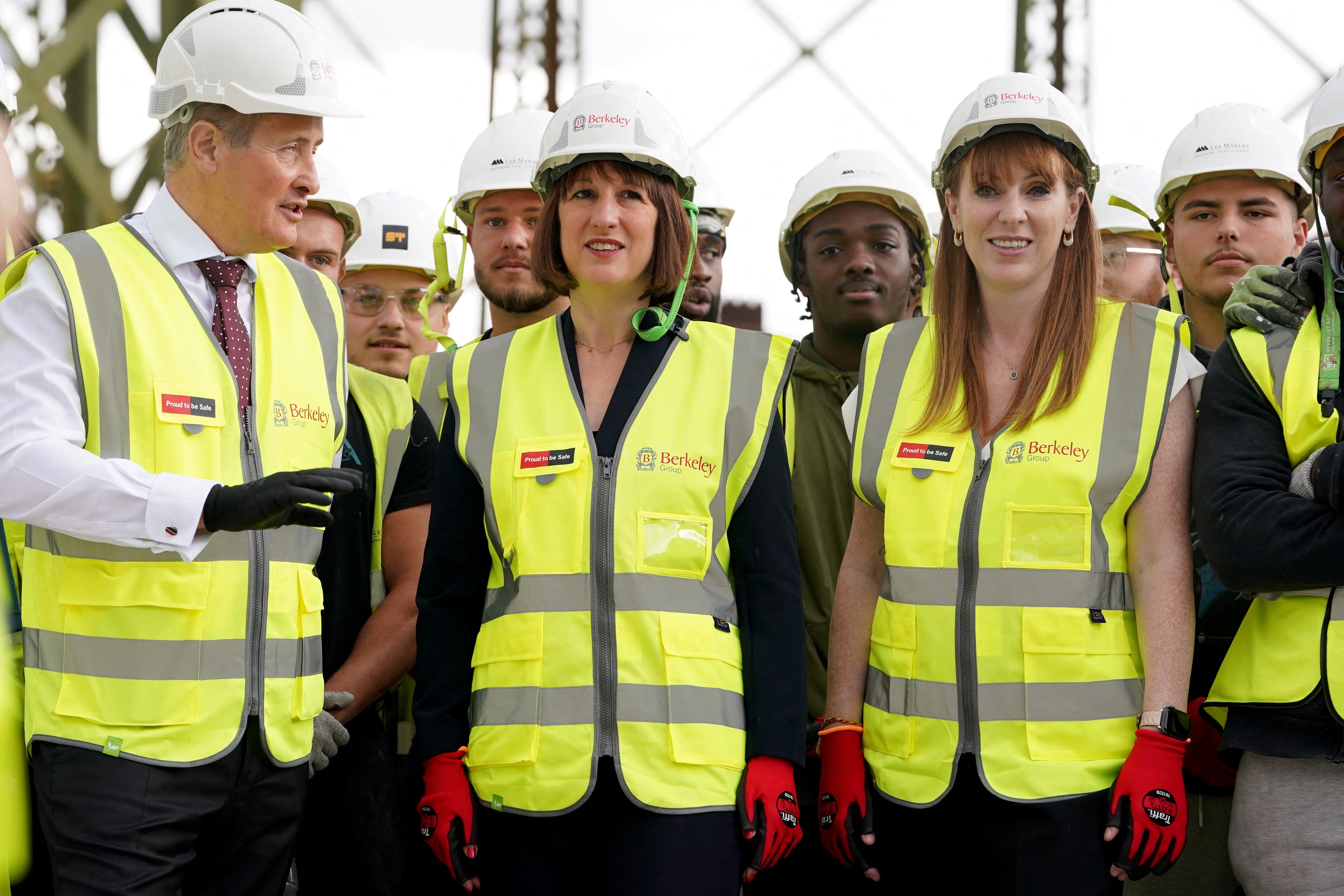Starmer’s housebuilding plans look great on paper – but there’s good reason builders say they won’t work
A new government, a new target for building more much-needed homes. But as Chris Blackhurst discovers, many developers have heard it all before


Negotiating the London traffic on Wednesday night was a particular nightmare. The King’s Speech, European leaders flying in for their summit, tourists everywhere, and balmy weather bringing people onto pavements all contributed to the impression of a city that is overcrowded, at times barely functioning.
At a dinner of business leaders off Piccadilly, conversation soon focused on the new government and its plans. We’d heard the King outline 40 bills, promising “a decade of national renewal”.
There was no ill will towards Labour. Guests were nervous about the likelihood of tax increases, but generally the consensus was that Britain had stability after years of turmoil, and that relations with the EU (the B-word, along with the problems it’s caused, is mentioned time and again at business gatherings, but was barely raised during the election campaign) could only improve.
Then, the housebuilder pushed back his chair. He was well known, an industry leader, hugely successful and a veteran of many governments. We’d asked for his thoughts on one of the most eye-catching measures of all: the pledge to build 1.5 million new homes during this parliament.
There was a wry grin. We were all hooked on the 1.5 million as revolutionary and exciting. It’s not. Memories are short. This parliament will last five years, so that’s 300,000 new homes a year. The Boris Johnson administration had the same target, though it was scrapped by Liz Truss as too “Stalinist”. Indeed, the ambition of 300,000 new homes a year has been bandied around Whitehall for years.
Even so, would it be met? No. There would have to be radical change across several areas before there was any likelihood of that figure coming within touching distance.
Take London and the South East, the region with the greatest need as the population continues to swell. The latest CBRE research shows that the number of new homes becoming available is currently 60 per cent below the peak (which was almost a decade ago, in 2015).
We’re transfixed by planning – and so, judging by their pledge to ease the rules, are Keir Starmer and his colleagues. In London, planning approvals are 30 per cent down year on year, and applications are down 11 per cent.
It can be argued that applications have fallen because obtaining permission is so difficult, and Starmer and co have said they will fix that. But completions have also dropped, by 20 per cent, while construction starts are at 17 per cent.
Another figure put out by the government is the hiring of 300 new planning officers. There is no mention of how they will be recruited, who will pay for them, or how long the process will take. But we’re assured that it will “get Britain building”.
While 300 may seem a substantial number, it amounts to roughly one new officer for every two parliamentary constituencies. Between 2010 and 2020, some 3,100 planners left the public service, almost a fifth of the total, many attracted by higher salaries in the private sector.
Pay for council planners has fallen behind, making the job a less attractive proposition for graduates. Then there’s the overwork and stress. Yet the government says 300 more will be recruited, and they will be working towards a goal of 300,000 new homes a year – meaning an increase in the workload.
Deputy prime minister Angela Rayner says she will order councils to build on the “grey belt” – poor-quality land within the green belt, such as that occupied by disused factories, car parks, and old petrol stations.
Rayner says she will bring forward legislation that forces councils to comply, but that won’t happen overnight; predictions are being made that it will be two years before the new law is implemented.
And as the developer told his fellow diners, it’s often not the site itself that is the issue, but the infrastructure needed to service the new properties – roads, water, power, social care, healthcare, education. All of it must be applied for, scrutinised and approved. And built.
This brought him on to his main bugbear. We’re in danger of viewing planning in isolation, as if it is the source of the issue. Completions and construction starts are also heavily down, because material costs continue to climb. Inflation has coursed through housebuilding, affecting every plank, brick, pipe, tile and screw. Supermarket grocery prices may be falling or stabilising, but construction is becoming ever more expensive.
With that, too, is the labour itself. The 300,000 new homes target happily assumes that sufficient skilled workers exist to build them. They don’t, the developer said. Not now. Brexit saw to that, and those who left have not been replaced in the same numbers by UK workers. Again, training apprentices takes time and assumes that school-leavers even want to go down that path.
House prices have been falling, but the cost of borrowing has been rising. Interest rates remain stubbornly high.
There is a chicken-and-egg aspect to the government’s ambition. Starmer and Rayner see new homes as a driver of growth, but other economic conditions must improve before that new-homes figure rises.
This, too, is predicated on events not intervening. The Grenfell disaster woke up authorities to the lack of effective fire regulation on tall buildings. One change, introduced by Michael Gove as housing secretary, was to require all new highrise residential properties of 18 metres and above to have a second staircase; previously, the threshold was 30 metres. His initiative, which was based on sound principles, added to the cost of building along with timeframes, as projects had to be redesigned.
In UK construction, five years is not long – 2029 is not far away, and the clock is already ticking. The industry is glad of the boost that a target of 300,000 will bring, but for developers who have been around for a while, the smiles are accompanied by raised eyebrows and shakes of the head. Let’s see what the real figure turns out to be.






Join our commenting forum
Join thought-provoking conversations, follow other Independent readers and see their replies
Comments